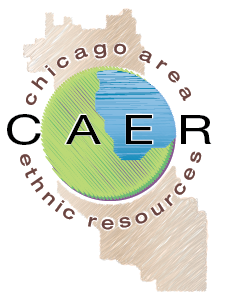-
Where are all the people?
By Cecilia Rubalcava

I began my life in America when I was but three months old. My parents, Jesus and Teresa, decided to move our family (which included my brother Jesse, 3, and my sister Claudia, 1) from Mexico to America. They had hoped to work in the United States and save up enough money to start a small business in their hometown of Aguascalientes. Their stay was to be temporary. But two years into it, my brother Omar was born and my father found a good job as a machine operator, which postponed our plans to return to Mexico.
It was April and snow was still covering the ground when we arrived in East Moline. My mother had never seen snow and thought it was beautiful; but the novelty soon wore off. The desolation of the small town was foreign to her. She still laughs when she recounts the times Jesse, as a child, would sit in front of the window, longingly looking out, and would ask, “Momi, donde estan toda la gente?” (“Mommy, where are all the people?”)
My mother explained to me that she was used to such a different lifestyle. In Aguascalientes you are constantly among people. She missed the sounds of her town: the din of the morningʼs activities, the shouting of newspaper vendors, the clanging of church bells. She was used to walking to the markets to purchase food for the meals of the day and running into people she knew along the way. I sensed my parentsʼ longing for the life they left behind and the cultural dislocation they felt, when they recounted their memories of Mexico.
What strikes me most about being a “Mexican American” is that I have grown up with two different cultures. I have the opportunity to learn from both and the freedom to choose what I accept or deny of each. But as the term applies to me, it suggests I am neither wholly Mexican nor American; this leaves me with a sense I can claim neither identity. This feeling of displacement renders me voiceless at times, unable to have a strong grasp of my own identity.
Having grown up in East Moline, a small Midwestern town with a very small Latino community to identify with, I did not notice the duality of our world. It was just so automatic to live in Spanish in our home and in English outside our door. They both spilled over enough into each other that it all melted together somehow. Although the rule of the house was to speak in Spanish, our television and radio would be speaking or singing to us in English. While outside of the home, everywhere we went we would carry our Spanish culture with us.
I began to take more notice when my siblings and I reached the ages when we would become interpreters for our parents. I grew to dread this task at times, for there were situations in which I did not fully understand what it was my parents wanted, so I would have a difficult time communicating it to the third party. It was such a feeling of entrapment, because I certainly did not want to humiliate myself in front of a complete stranger, nor did I want to deal with my parentsʼ disappointment because I did not carry through for them. But as I grew up, I appreciated my bilingualness more and more.
It was not until my summer trips to Mexico that I was fully able to come to terms with my Mexican identity. During my first trip there, at the age of 8, I was enraptured by the vibrancy of the colors I saw — from the brilliant hues of fruit in the marketplace to the deep, rich colors of the traditional dress of Mexicoʼs indigenous cultures. I had never come across these colors in the United States and the experience piqued my curiosity about cultures all over the world.
I began a hunt for my own history. I found a source for building my own identity by reading about Mexicoʼs rich but bloody history; I was fascinated by the Indian culture, yet repulsed by its brutal conquest by the Spanish and the ensuing repression of Mexicoʼs indigenous peoples that continues to this day.
I pursued these studies in college. I took courses in Mexican history and culture. And in my costume design course, I focused on the clothing of native cultures. This education has enabled me to feel like an ethnic person with an American lifestyle. Because most of our family still lives in Mexico, we visit often; these visits keep us aware of Mexican culture and its constant changes.
I still am uncertain which side is dominant in me, but I have come to understand that my passions are definitely an outgrowth of my Mexican heritage and its rich cultural diversity.
Cecilia Rubalcava is a 1996 Columbia College graduate who works in costume design.
Return to Links & Features
Available Now!
The
Chicago Area Ethnic
HandbookEasy-to-use chapters on the histories and traditions of
37 ethnic groups.
Second Edition
UPDATED and EXPANDED!

The Directory
of Chicago Area Ethnic Organizations
and Media Who they are, what they do and how to reach them.
Third Edition



